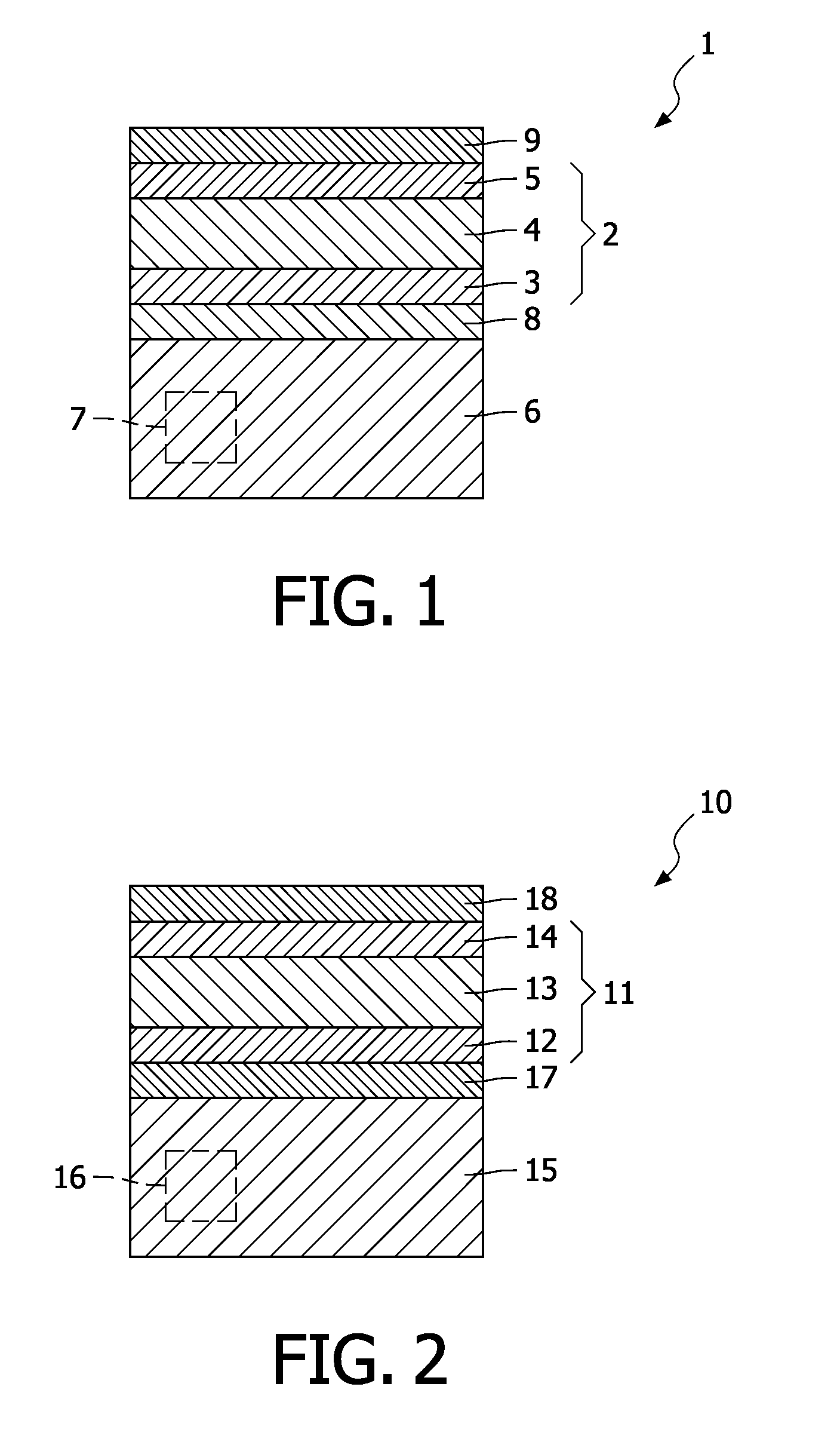Electrochemical energy source, and method for manufacturing of such an electrochemical energy source
a technology of electrochemical energy source and electrochemical energy source, which is applied in the direction of cell components, sustainable manufacturing/processing, and final product manufacturing, etc., can solve the problems of reducing the capacity of said energy source, and re-crystallizing of adjacent active layers already deposited on the substrate, so as to achieve stable electrochemical energy source, prevent degradation of adjacent active layers, and facilitate overheating
- Summary
- Abstract
- Description
- Claims
- Application Information
AI Technical Summary
Benefits of technology
Problems solved by technology
Method used
Image
Examples
Embodiment Construction
[0016]FIG. 1 shows a schematic cross section of an electrochemical energy source 1 known from the prior art. An example of the electrochemical energy source 1 shown in FIG. 1 is also disclosed in the international patent application WO2005 / 027245. The known energy source 1 comprises a lithium ion battery stack 2 of an anode 3, a solid-state electrolyte 4, and a cathode 5, which battery stack 2 is deposited onto a conductive substrate 6 in which one or more electronic components 7 are embedded. In this example the substrate 6 is made of doped silicon, while the anode 3 is made of amorphous silicon (a-Si). The cathode 5 is made of LiCoO2, and the solid-state electrolyte is made of LiNbO3. Between the battery stack 2 and the substrate 6 a lithium barrier layer 8 is deposited onto the substrate 6. In this example, the lithium diffusion barrier layer 8 is made of tantalum. The conductive tantalum layer 8 acts as a chemical barrier, since this layer counteracts diffusion of lithium ions (...
PUM
| Property | Measurement | Unit |
|---|---|---|
| temperature | aaaaa | aaaaa |
| temperatures | aaaaa | aaaaa |
| temperatures | aaaaa | aaaaa |
Abstract
Description
Claims
Application Information
 Login to View More
Login to View More - R&D
- Intellectual Property
- Life Sciences
- Materials
- Tech Scout
- Unparalleled Data Quality
- Higher Quality Content
- 60% Fewer Hallucinations
Browse by: Latest US Patents, China's latest patents, Technical Efficacy Thesaurus, Application Domain, Technology Topic, Popular Technical Reports.
© 2025 PatSnap. All rights reserved.Legal|Privacy policy|Modern Slavery Act Transparency Statement|Sitemap|About US| Contact US: help@patsnap.com


